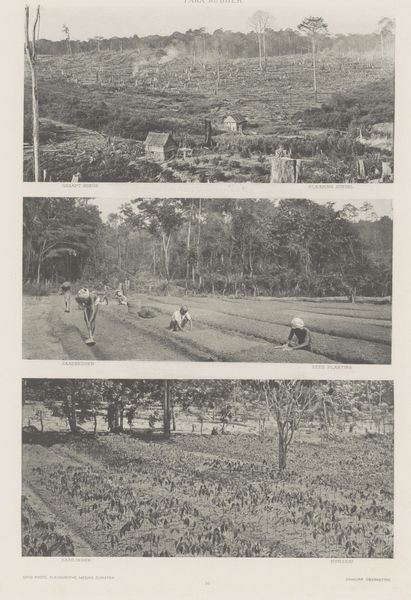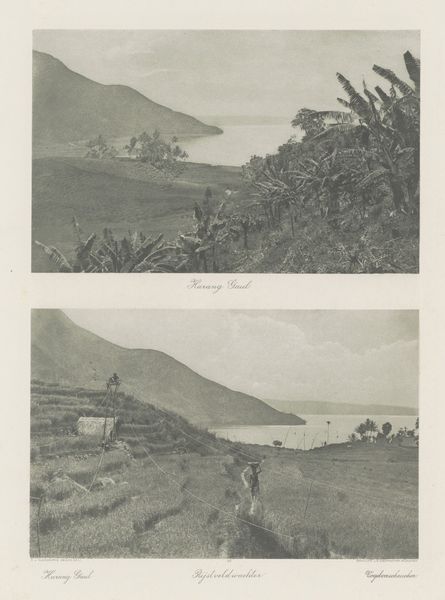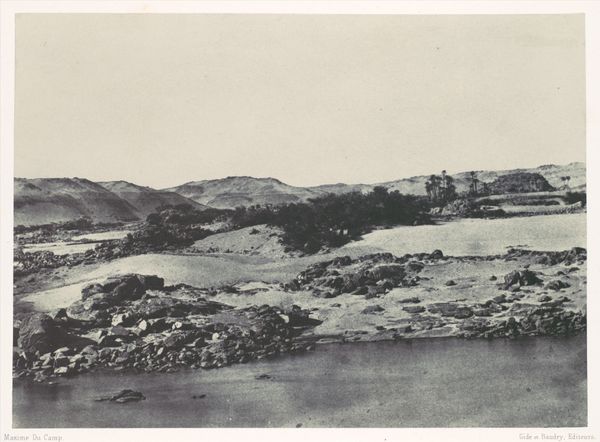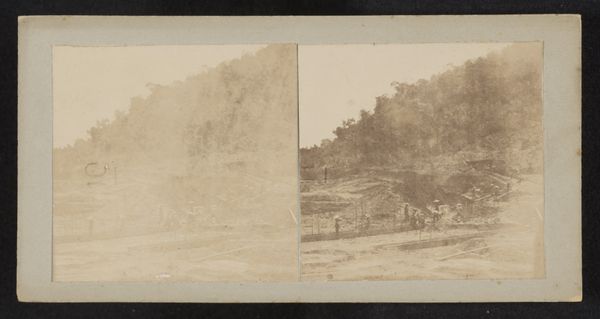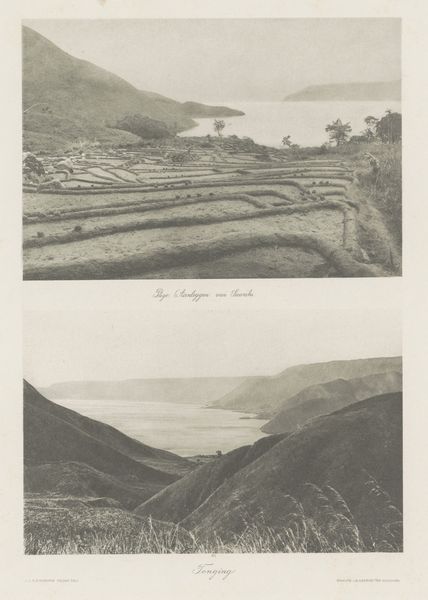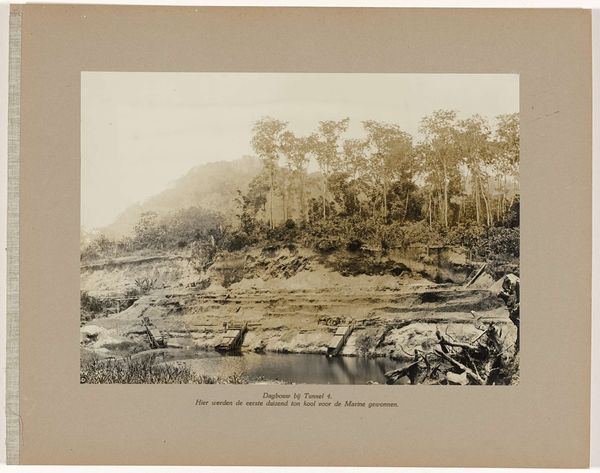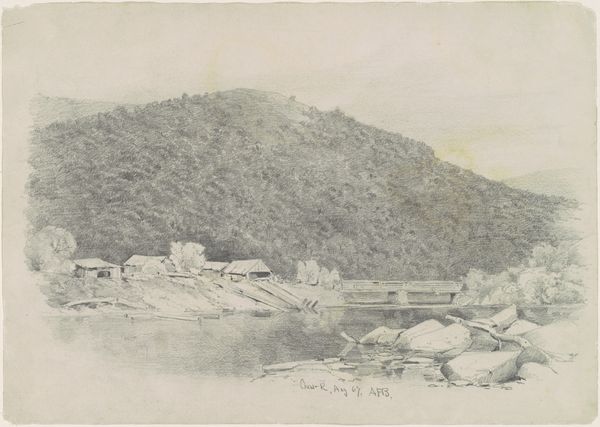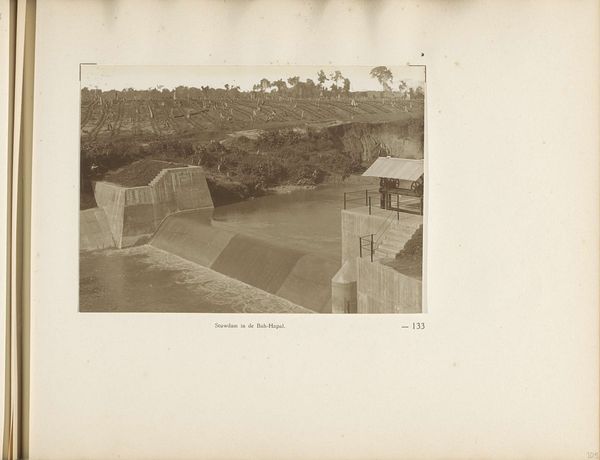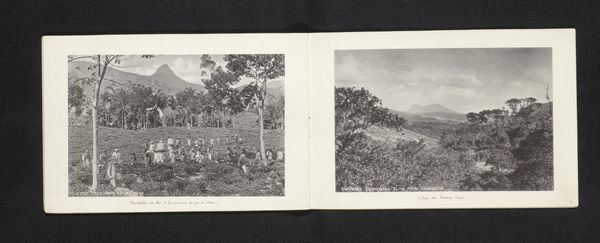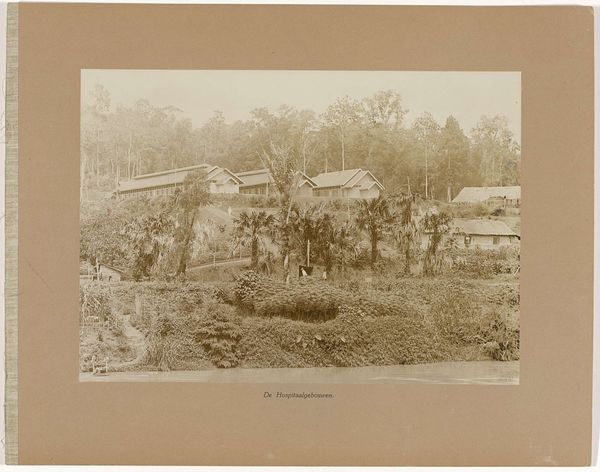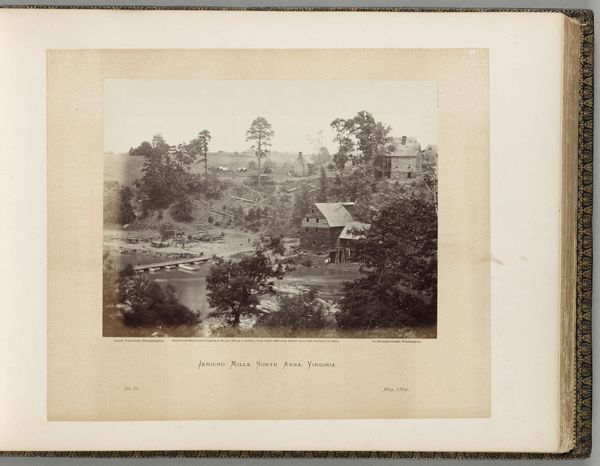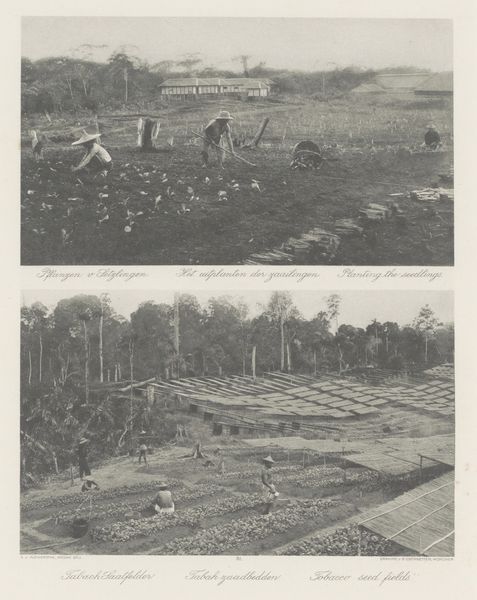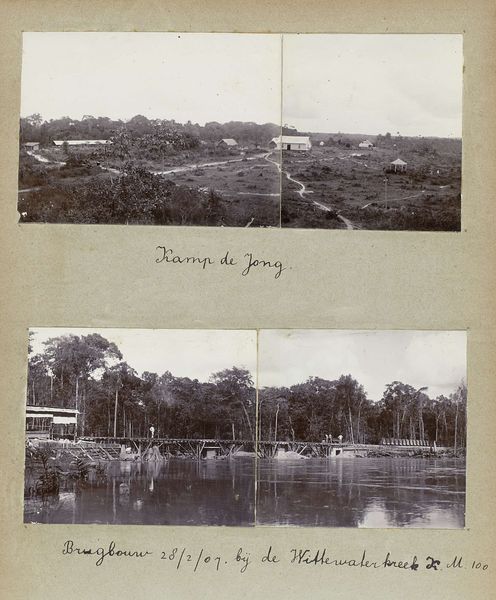
Gezicht op het Batakdorp Rakoet Bessi (boven) en landschap met rijstvelden en vulkaan (onder) op Sumatra before 1898
0:00
0:00
print, photography, graphite
# print
#
asian-art
#
landscape
#
photography
#
graphite
#
graphite
Dimensions: height 157 mm, width 220 mm, height 134 mm, width 220 mm
Copyright: Rijks Museum: Open Domain
Editor: This fascinating piece, "Gezicht op het Batakdorp Rakoet Bessi (boven) en landschap met rijstvelden en vulkaan (onder) op Sumatra," was created before 1898 by Carl J. Kleingrothe. It seems to be a combination of photography and graphite, currently housed in the Rijksmuseum. The composition, with the village scene above and the rice paddies below, gives it a unique layered effect. What do you see in this work, especially concerning its structure? Curator: Focusing on the formal elements, one notices the deliberate partitioning of the pictorial space. The artist uses a distinct horizontal division, creating two separate yet interconnected zones. The upper register, depicting the village, is characterized by dense, almost cluttered, composition, full of detail. How do these clustered forms play against the geometrical and linear organization evident in the rice fields below? Editor: I see what you mean. The top feels very organic and natural, versus the gridded regularity of the rice fields. It’s almost a binary between the built environment and the natural landscape. Is there a tension there? Curator: Indeed. The interplay between the village's organic arrangement and the rice paddies' structured geometry creates a visual dialogue. Note the subtle shifts in tonality and texture; the upper portion, richer in detail and darker values, contrasts with the lighter, more open lower section. How might these contrasts influence our interpretation of space and depth within the image? Editor: It’s almost like the artist is guiding our eye downwards, using the contrast to emphasize the vastness of the landscape. The tonal shifts add to that sense of depth. I'm curious about the stark, linear compositions; is this division the key structural element in this image? Curator: Precisely. The division allows for a structured comparative analysis. The artist leverages form and contrast to facilitate this. Focusing on such oppositions within an image unlocks further aesthetic comprehension. Thank you, that close consideration has sharpened my attention to the binary elements! Editor: That was enlightening! It makes me appreciate how the artist manipulated the structure to guide our perception and understanding.
Comments
No comments
Be the first to comment and join the conversation on the ultimate creative platform.
